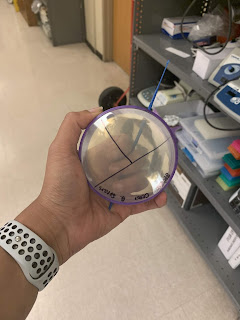Fall 21 Post 5 *Faint of Hearts Do Not Look*
Can you determine the time of death from bloodstains found at a crime scene?
In certain situations, blood stain analysis can be considered a supplemental tool for determining the postmortem interval (PMI). Blood stain pattern analysis is often useful in establishing and reconstructing the sequence of events or mechanisms that caused blood flow. It is important to remember, however, that a body can release blood either while alive or after death, due to gravity. Analysis of this "static aftermath" may assist in determining some time factors, including clotting and drying times. But investigators must also consider numerous environmental factors, such as exposure to heat and humidity, when making any time of death estimations using blood stain analysis.
Signs of active bleeding before death, such as arterial spurting or blood expired from the nose, mouth or lungs, will help in determining that a victim was still alive at a certain location when the blood was deposited. A large volume of blood released from a body may also indicate that it was impossible for the victim to continue functioning. In such circumstances, it may be established that the individual died of exsanguination, or "bled to death".
In sum, blood stain analysis, can assist in developing a PMI if used in conjunction with other disciplines in the forensic sciences such as forensic entomology, medical examiner examinations and observations, and analysis of environmental conditions.
https://www.scientificamerican.com/article/can-you-determine-the-tim/




Comments
Post a Comment